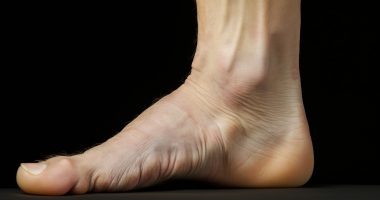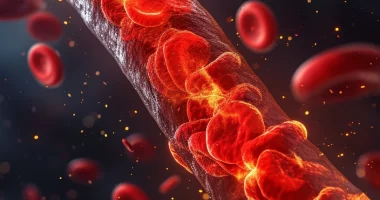Elbow synovitis
Definition
Synovitis is an inflammation of the membrane lining the capsule and synovial bag of the joint, accompanied by fluid accumulation in its cavity. The disease develops as a result of trauma, surgical intervention, and, less often – as a consequence of other pathologies. Synovitis affects large joints of the hands and feet. Elbows, along with knees, suffer most often.
Causes of synovitis
The main predisposing factors for the development of synovitis of the elbow joint are as follows:
- acute injury (elbow contusion, tendon rupture);
- chronic trauma to the joint during sports and professional activities;
- osteoarthritis; bacterial lesions in the presence of a focus of infection in the body; rheumatic diseases (gout, autoimmune arthritis);
- hemophilia;
- endocrine disorders (obesity, diabetes mellitus, thyrotoxicosis, hypothyroidism);
- allergic reactions.
Causes of elbow joint synovitis:
- Non-infectious synovitis includes traumatic synovitis arising from intra-articular injuries. Other causes may include imperfect ligamentous apparatus, meniscus damage, and joint deformities. Usually, the joint contains a small amount of joint fluid, which performs a shock-absorbing function and reduces friction. Synovitis increases the amount of this fluid and changes its composition.
- If pathogenic microflora gets into the exudate, infectious synovitis develops. Ligaments, cartilage, and bones may become involved in the inflammatory process. In the absence of qualified treatment of synovitis, complications or recurrences may develop contractures, deforming osteoarthritis, etc. Constant relapses lead to the thickening of the fibrous capsule, which in turn contributes to the looseness of the joint as a whole. All this eventually leads to the joint becoming easily susceptible to dislocations, subluxations, and ligament tears. Advanced cases of synovitis take much longer to treat than those diagnosed in the early stages.
Symptoms of elbow synovitis
Pain, swelling, and limited elbow mobility are the main signs of synovitis. Unpleasant sensations increase with palpation, flexion, and extension of the arm. Against the background of inflammation, the affected area becomes red and hot; it is not excluded from the appearance of symptoms of general intoxication: weakness, chills, and fever. The severity of manifestations depends on the course of the disease: acute synovitis occurs sharply and vividly; relapse of chronic inflammation has erased symptoms; purulent – immobilizes the joint due to severe swelling and pain syndrome, captures the surrounding tissues, provokes an increase in regional lymph nodes and feverish condition of the patient.
The most common symptoms of this condition are:
- Increased size and flattening of joint contours due to inflammation, swelling, and increased intra-articular fluid.
- Pain on palpation, limited movement, discomfort.
- There may be weakness, fever, malaise.
- The symptoms are much more pronounced in acute, infectious synovitis than in non-infectious synovitis.
- Chronic synovitis is accompanied by rapid joint fatigue, aching pain, and minor problems with joint mobility.
Consequences of synovitis
Neglected synovitis can cause serious complications. Over time, other joint structures become involved in the pathological process; scarring and connective tissue overgrowth occur. The consequences of inflammation include:
- osteoarthritis, accompanied by destruction of cartilage and nearby bones;
- contracture – complete or partial immobility, the elbow is in a forced position due to adhesions, scars, fibrosis;
- purulent arthritis, phlegmon of the joint capsule, inflammation of subcutaneous fatty tissue, bone ankylosis (fusion);
Diagnosis and treatment ee
Synovitis is diagnosed based on instrumental (ultrasound, MRI, arthroscopy) and laboratory tests. Synovial fluid is taken for analysis, which clarifies the causes of inflammation if microorganisms or crystals are detected. Clinical, biochemical, and immunological blood tests help to identify bacterial infection, elevated uric acid levels, and specific antibodies characteristic of chronic diseases that provoke synovitis. The next step after diagnosis is immobilization of the joint. The elbow is tightly bandaged and fixed with a splint to ensure maximum immobility. A large volume of effusion is shown as a puncture when pumping out the fluid. After the procedure, rapid improvement occurs, blood circulation in the tissues is restored, and infections are prevented.
Further treatment tactics depend on the causes of the disease:
- Antibiotics. They are prescribed for bacterial lesions via intra-articular or systemic injections. The drug is selected based on the type of pathogen found in the synovial fluid. Treatment is prolonged, carried out in hospital conditions, and lasts at least two weeks after the disappearance of complaints. The infected elbow is drained several times a day.
- NSAIDs are non-steroidal anti-inflammatory drugs (NSAIDs) that have analgesic and antipyretic effects. They are used briefly in acute inflammation until the main symptoms are relieved; in chronic inflammation, they are used for a long time, up to several months. NSAIDs have a negative impact on the gastrointestinal tract, liver, kidneys, and cardiovascular system. Drugs are selected to avoid side effects, taking into account the patient’s state of health and strictly following clinical recommendations.
- Corticosteroids. They are injected intra-articularly, where they produce therapeutic effects for several weeks. Injections traumatize cartilage tissue, so their use is limited to 3-4 yearly procedures. With inflammation accompanying rheumatic pathologies, hormonal drugs are used systemically.
- Cytostatics and immunosuppressants are prescribed by rheumatologists for autoimmune-inflammatory joint lesions. They have serious side effects. Untimely seeking medical help can lead to dangerous consequences, up to the patient’s disability.
- In the recovery period, a course of therapeutic gymnastics is carried out.
- Surgical intervention is indicated in case of a prolonged course of chronic synovitis, the ineffectiveness of conservative therapy, and the presence of irreversible changes in the synovial membrane. The primary surgical intervention for this pathology is arthroscopic debridement of the elbow joint.
- Antibiotics, physical therapy, therapeutic exercises, and massage are prescribed in the postoperative period.
All these treatment options are available in more than 790 hospitals worldwide (https://doctor.global/results/diseases/elbow-synovitis). For example, Arthroscopic elbow debridement can be done in 14 clinics across Israel for an approximate price of $4,2K (https://doctor.global/results/asia/israel/all-cities/all-specializations/procedures/arthroscopic-elbow-debridement).


